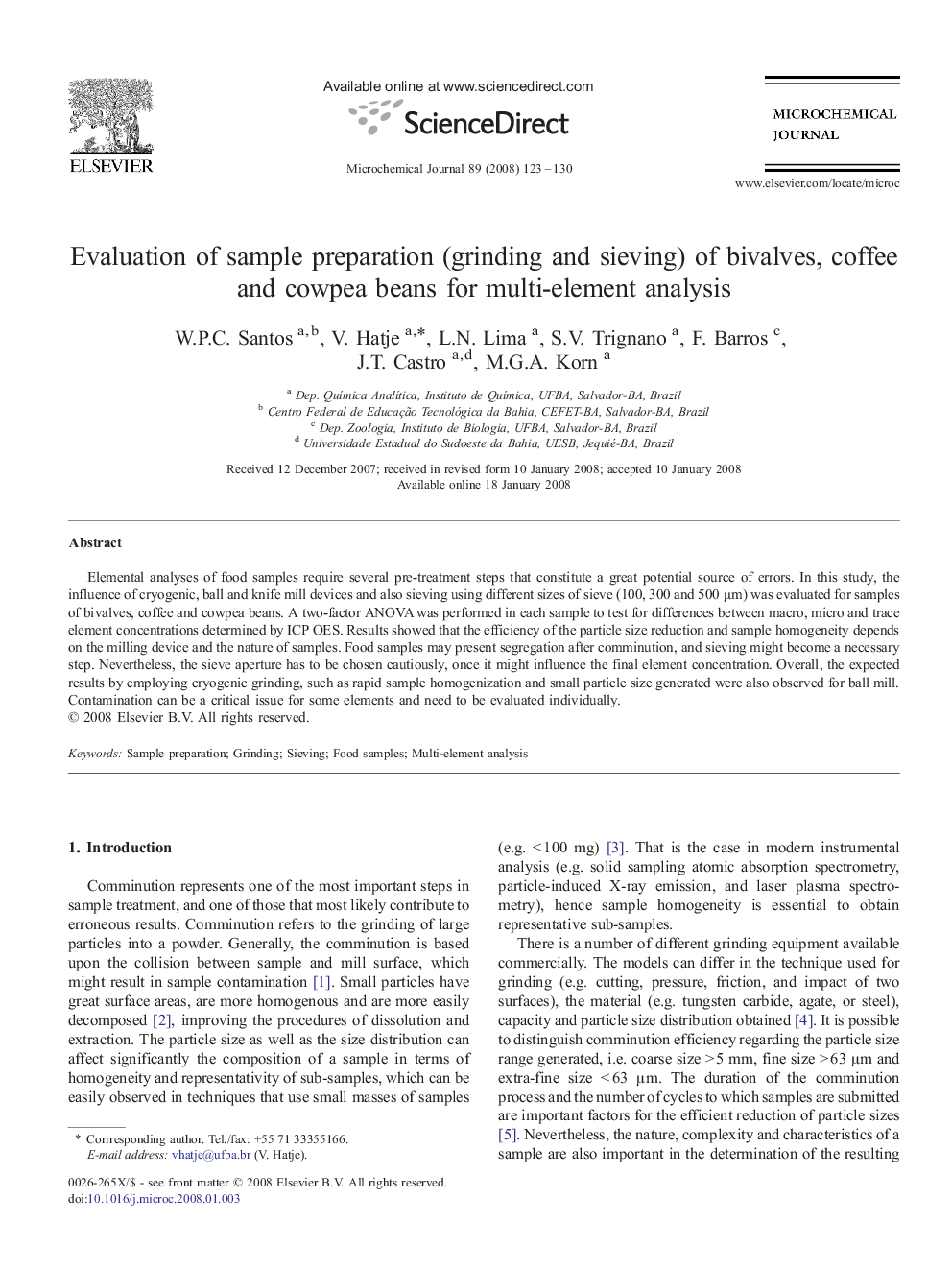| Article ID | Journal | Published Year | Pages | File Type |
|---|---|---|---|---|
| 1228182 | Microchemical Journal | 2008 | 8 Pages |
Elemental analyses of food samples require several pre-treatment steps that constitute a great potential source of errors. In this study, the influence of cryogenic, ball and knife mill devices and also sieving using different sizes of sieve (100, 300 and 500 μm) was evaluated for samples of bivalves, coffee and cowpea beans. A two-factor ANOVA was performed in each sample to test for differences between macro, micro and trace element concentrations determined by ICP OES. Results showed that the efficiency of the particle size reduction and sample homogeneity depends on the milling device and the nature of samples. Food samples may present segregation after comminution, and sieving might become a necessary step. Nevertheless, the sieve aperture has to be chosen cautiously, once it might influence the final element concentration. Overall, the expected results by employing cryogenic grinding, such as rapid sample homogenization and small particle size generated were also observed for ball mill. Contamination can be a critical issue for some elements and need to be evaluated individually.
